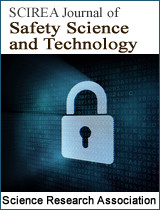Engage students with dyslexia in video-based learning activities
DOI: 396 Downloads 5393 Views
Author(s)
Abstract
The aim of this paper is to focus reader's attention on “mobile” use of iTunesU and USiena model, as future compensatory tools. Starting from multimedia learning theories, a mobile course model has been designed (USiena model) and the experimental method has been used to carry out a “pilot study” with 32 dyslexic students. The goal of experimentation was to investigate how iTunesU associated with USiena model influences learning. The experimental hypothesis was that the proposed design solution would favor the contents transmission compared to the "talking book" improving learning and proposing (iTunesU and USiena model) as a possible compensatory tool for the future. Two audio contents have been recorded, two video contents have been produced (with USiena model) and the learning level has been compared. The obtained results confirmed the experimental hypothesis.
Keywords
Mobile, Mobile learning, iTunesU, Dyslexia, Compensatory tool
Cite this paper
Antonio Giardi,
Engage students with dyslexia in video-based learning activities
, SCIREA Journal of Safety Science and Technology.
Volume 1, Issue 1, October 2016 | PP. 15-35.
References
| [ 1 ] | Associazione Italiana Dislessia, available on the web at: http://www.aiditalia.org/it |
| [ 2 ] | Associazione Italiana Dislessia (guida ai genitori), available on the web at: http://www.aiditalia.org/Media/Documents-main/guida_genitori.pdf |
| [ 3 ] | Mammarella, N., Cornoldi, C. & Pazzaglia F. (2005). Psicologia dell’apprendimento multimediale. E-learning e nuove tecnologie, Il Mulino editore |
| [ 4 ] | Paivio, A. (1991). Images in mind:the evolution of a theory, Harvester Wheatsheaf, New York, pp. 12 |
| [ 5 ] | Paivio, A. (1991). “Dual coding theory: retrospect and current status”, Canadian journal of Psychology, Vol. 45, No. 3, pp. 255 – 287 doi:10.1037/h0084295 |
| [ 6 ] | Chandler, P. & Sweller, J. (1991). “Cognitive load theory and the format of instruction”, Cognition and Instruction, Vol. 8, Issue 4, pp. 293 – 332 doi:10.1207/s1532690xci0804_2 |
| [ 7 ] | Schnotz, W. (2001). “Sign systems, technologies, and the acquisition of knowledge”, Using Complex Information Systems, Rouet, J. F., Levonen, J., & Biardeau, A. (eds.), Poitiers, France, Pergamon Press, pp. 9 – 29 |
| [ 8 ] | Mayer, R., E. (2000). “Intelligence and education”, Handbook of intelligence, Sternberg, Robert. J. (Ed), New York, NY, pp. 519-533 |
| [ 9 ] | Mayer, R., E. (2001). Multimedia Learning. New York: Cambridge University Press |
| [ 10 ] | Mayer, R., E. (2005). “Cognitive Theory of Multimedia Learning”, The Cambridge Handbook of Multimedia Learning, Cambridge, U.K.: Cambridge University Press, pp. 31-48 doi:10.1017/CBO9780511816819.004 |
| [ 11 ] | Clark, R. C., & Mayer, R. E. (2011). E-Learning and the Science of Instruction. Proven Guidelines for Consumers and Designers of Multimedia Learning (3rd ed.). San Francisco, CA: John Wiley & Sons |
| [ 12 ] | Mayer, R., E. (2008). “Applying the science of learning: Evidence-based principles for the design of multimedia instruction”. American Psychologist, Vol. 63, No. 8, pp. 760-769 doi:10.1037/0003-066X.63.8.760 |
| [ 13 ] | Mayer, R., E. & Johnson, C., I. (2008). “Revising the redundancy principle in multimedia learning”, Journal of Educational Psychology, Vol. 100, No. 2, pp. 380-386 doi:10.1037/0022-0663.100.2.380 |
| [ 14 ] | Ministero dell'Istruzione, dell'Università e della Ricerca, available on the web at: http://www.istruzione.it/esame_di_stato/Primo_Ciclo/normativa/allegati/prot5669_11.pdf |
| [ 15 ] | Ministero dell'Istruzione, dell'Università e della Ricerca, available on the web at: http://www.istruzione.it/esame_di_stato/Primo_Ciclo/normativa/allegati/legge170_10.pdf |
| [ 16 ] | Ministero dell'Istruzione, dell'Università e della Ricerca, available on the web at: http://hubmiur.pubblica.istruzione.it/alfresco/d/d/workspace/SpacesStore/76957d8d-4e63-4a21-bfef-0b41d6863c9a/linee_guida_sui_dsa_12luglio2011.pdf |
| [ 17 ] | piattaforma iTunesU Siena, available on the web at: https://itunes.apple.com/WebObjects/DZR.woa/wa/viewArtist?id=558516596 |
| [ 18 ] | Msoftblog. (2014). Perché non si può più trascurare il Web Mobile, available on the web at: http://www.msoft.it/perche-non-si-puo-trascurare-web-mobile/ |
| [ 19 ] | Gasperini, E. (2014). “IAB Seminar Mobile – 1 luglio 2014 Audiweb: i primi dati mobile e della total digital audience”, Il sole 24 ore.com, available on the web at: http://www.ilsole24ore.com/pdf2010/Editrice/ILSOLE24ORE/ILSOLE24ORE/Online/_Oggetti_Correlati/Documenti/Tecnologie/2014/07/Gasperini-IabSeminar2014.pdf |
| [ 20 ] | Biblioteca digitale dell'Associazione Italiana Dislessia “Giacomo Venuti”, available on the web at: http://www.libroaid.it/ |
| [ 21 ] | PuntoEdu Dislessia, available on the web at: http://for.indire.it/dislessia/ |

